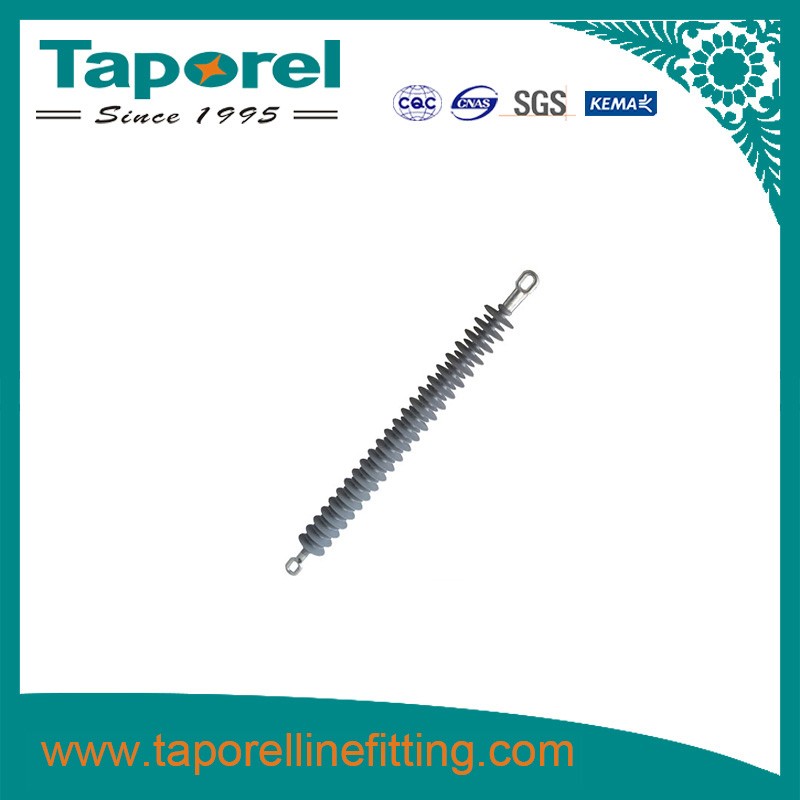The fracture of composite insulator can cause serious power accidents, therefore, the research on the mechanism of composite insulator fracture and the corresponding preventive measures is of great scientific significance and engineering value.
In this paper, this newly emerged abnormal fracture of composite insulator is named Decay-Like fracture of composite insulator. The research on the decay-like fracture of composite insulator is still in its initial stage, and there is no clear conclusion on the key issues such as fracture characteristics, fracture mechanism, fracture influencing factors and prevention measures. In order to ensure the safe and stable operation of the power system, it is necessary to conduct in-depth research on the fracture of composite insulators.
In several cases of abnormal fracture of composite insulators in recent years, the fracture form of the fractured mandrel was completely different from the known brittle fracture and usual fracture form of composite insulators.

1) severe deterioration of the mandrel (the macroscopic section of the mandrel is not smooth, the texture of the mandrel becomes crispy and shaped like dead wood, the mandrel is pulverized, the glass fiber and the epoxy resin matrix are separated from each other, etc.)
2) failure of the interface between the silicone rubber sheath and the FRP mandrel near the mandrel fracture.
3) interface failure area between the silicone rubber sheath and the FRP mandrel mostly connected to the high pressure end by a carbonized channel.
4) the appearance of a number of transverse galvanic corrosion holes developing from the inside out on the sheath.
5) Abnormal temperature rise in the insulator where the fracture occurred prior to the fracture.
In this paper, a complete description of the physicochemical characteristics of the fractured core bar is obtained by SEM analysis, FTIR analysis and TGA analysis of the actual fractured composite insulator core bar in the field.
(1) In terms of the microscopic morphology of the fractured mandrel: on the surface of the fractured mandrel, it can be observed that the glass fiber is broken, the glass fiber and epoxy resin matrix are separated from each other, the epoxy resin matrix shows traces of galvanic corrosion, and "air holes" and "bubbles" appear on the epoxy resin matrix remaining on the surface of the glass fiber; on the surface of the fractured mandrel, it can be observed that the single glass fiber section is not completely round, the glass fiber section is flat, and the failure of the interface between the glass fiber and the epoxy resin matrix can be observed.
(2) As far as the chemical composition of the crispy fractured mandrel is concerned: methyl (-CH3), ester (-COOR), aromatic structure (benzene ring), aliphatic structure (hydrocarbon group) in the epoxy resin matrix and Si-O bonding in the glass fiber are reduced; amino compounds and obvious nitrate ions (NO3-) are present in the fractured mandrel.
(3) In terms of resin content in the fractured mandrels: the epoxy resin matrix content in the fractured mandrels decreased significantly compared to the intact mandrel samples, and the decrease in the epoxy resin content in the external region of the mandrels was greater than the decrease in the epoxy resin content in the internal region of the mandrels.
(4) In terms of the deterioration degree of the fractured core rods, the deterioration degree of the core rods near the interface between the core rods and the sheath was greater than that of the core rods inside the core rods. It can be presumed that during the process of fracture, the initial deterioration point of the mandrel is at the interface between the mandrel and the sheath, and the deterioration of the mandrel occurs from the outside to the inside.
Taporel Electrical Insulation Technology Co., Ltd.
+86 29 8603 0621
No. 209 Jincheng Road, Jintan District, Changzhou City, Jiangsu Province, China
Copyright © Taporel Electrical Insulation Technology Co., Ltd. All Rights Reserved | Sitemap
